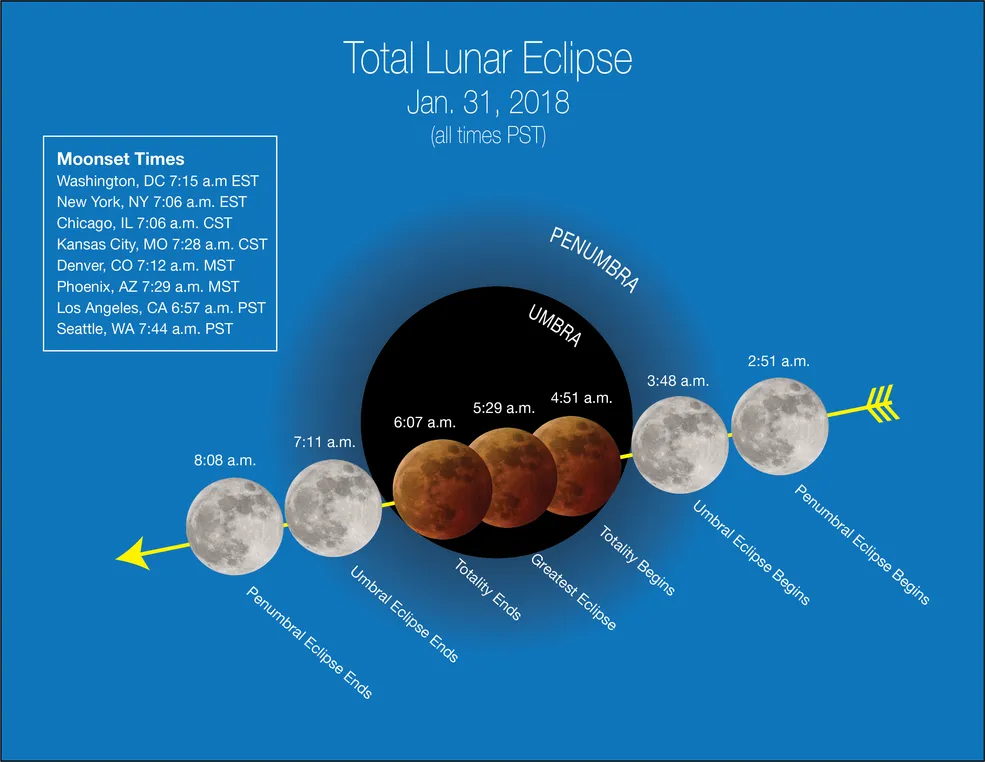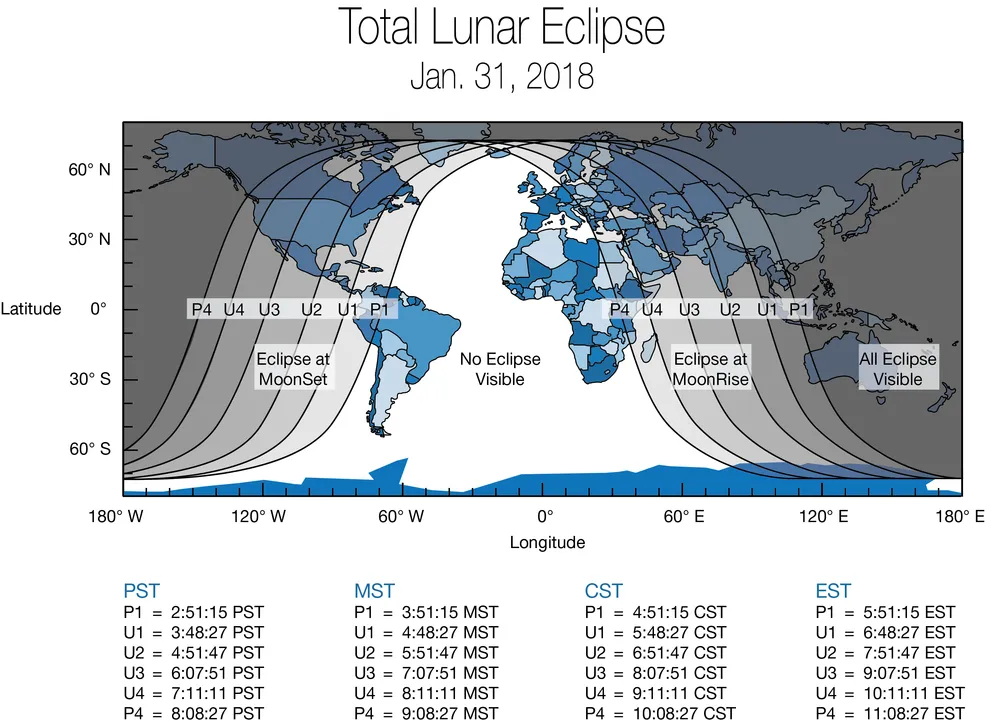Don’t Miss This Celestial Triplet: a Blue Moon, Supermoon and Lunar Eclipse
January’s second full moon will appear slightly larger during its blood-red lunar eclipse
/https://tf-cmsv2-smithsonianmag-media.s3.amazonaws.com/filer/a9/73/a97376be-bf3e-4247-b057-21e4d953efd7/21747454406_76f141123e_o.jpg)
On January 31, the Earth, moon and sun's complex orbital dance will result in an unusual coincidence of events: a blue moon, a supermoon, and a lunar eclipse.
These events all take place thanks to quirks in the moon's orbit. Though the moon whirls around Earth at an average distance of nearly 239,000 miles, it doesn't orbit in a perfect circle. Sometimes it's closer (known as its perigee) and sometime it's further away (known as its apogee). A supermoon takes place when the sun, moon, and Earth all align during the moon's closest pass—that is, when the moon's perigee occurs during a full or new moon.
At 4:58 AM EST on January 30, the moon will indeed be super, estimated to come within 223,069 miles of Earth. Because of its closeness, it's expected to appear 13 percent wider and 28 percent larger than it did during it did on January 15, when the orb was at its furthest point from Earth. But don't let the exciting name fool you: to the casual observer, supermoons don't look much bigger than on an average night.
This latest supermoon, however, is also dubbed a "blue" moon because it will be the second full moon this month. January's first full moon rose the first night of the month, and was also a big, bright supermoon. Blue moons happen once every 2.7 years because of a mismatch in the lunar and calendar months. It takes just 29 days for a full lunar cycle to pass—full moon to new moon and back again—which is a smidgen shorter than a calendar month.
The final celestial event of the night is the one that promises to put on a show—a lunar eclipse. Like the solar eclipse that spellbound Americans in August last year, a lunar eclipse occurs when the moon, Earth, and sun exactly align. But instead of the moon slipping between the Earth and sun, the much more common lunar eclipse takes place when the moon passes through Earth's shadow, turning the moon a dusky red.
The lunar eclipse will be visible across North America, with the best viewing farthest west, according to NASA. Viewers on the East coast will see the start of the eclipse just before dawn, possibly catching the the moon just beginning to take on a reddish hue before it sets. Stargazers further west will see more of the action. The best views will be in Hawaii, Alaska, Australia, and Eastern Asia, where early risers will be able to watch the entire eclipse. If you can't go out to see it, or clouds obscure your view, NASA TV plans to broadcast the entire event.
While some are calling this a “blood moon,” the term has a murky definition. At its most technical, a blood moon is a series of four consecutive lunar eclipses or tetrad, which is not the case for the upcoming eclipse. But during a lunar eclipse, the moon's trek through Earth's shadow often imparts a red tint from the filtering effects of Earth's atmosphere, leading to the colloquial description of a "blood red" moon.
The term "blue moon" is also far from scientific and has had suffered some quarrels over its definition. As Donald W. Olson, Richard Tresch Fienberg, and Roger Sinnott write for Sky and Telescope, the blue moon disagreement can be traced back to 1946, when James Hugh Pruett wrote an article for Sky and Telescope called “Once in a Blue Moon.” In the article, he misinterpreted the definition of the blue moon as an extra full moon in a calendar month.
The earlier definition is much more confusing, Olson, Fienberg and Sinnott explain:
"Nearly a decade earlier, 'Blue Moon' had been used in the Maine Farmers' Almanac to mean the third full Moon in a season containing four of them (rather than the usual three). This occasional add-on was needed to keep the tradition sequence of names — Wolf Moon, Strawberry Moon, Harvest Moon, and so on — in sync with the calendar."
Most modern notions of blue moons follow Pruett's misunderstanding—the second full moon in a month with two. This year will actually see a duo of blue moons in both January and March, and no full moon at all in February. Two blue moons in one year only happens three to five times a century, according to TimeAndDate.com, with the last double taking place in 1999 and the next in 2037.
While none of the upcoming events—a supermoon, blue moon, or a lunar eclipse—are particularly rare on their own, together they’ll make for a beautiful night of stargazing and a potent reminder of the multidimensional dance of our home amongst the stars.

